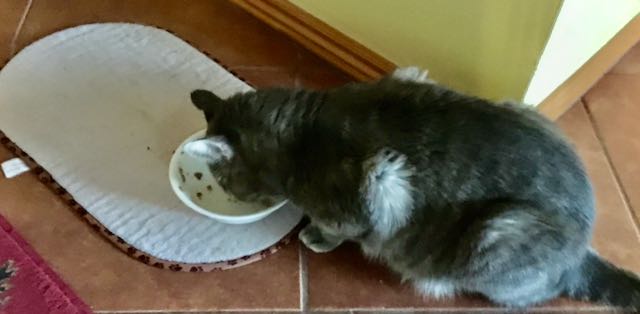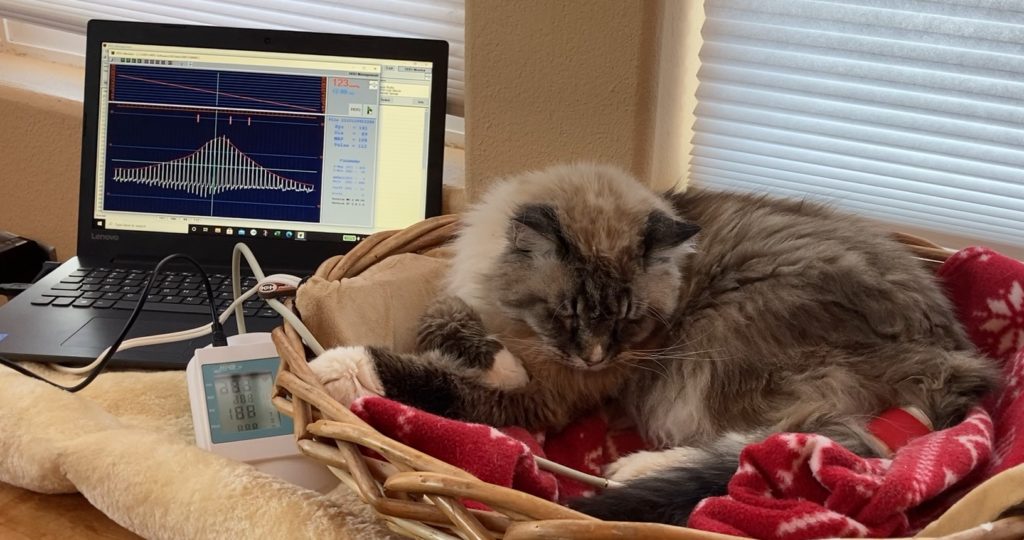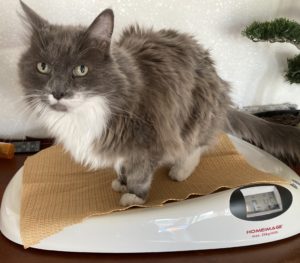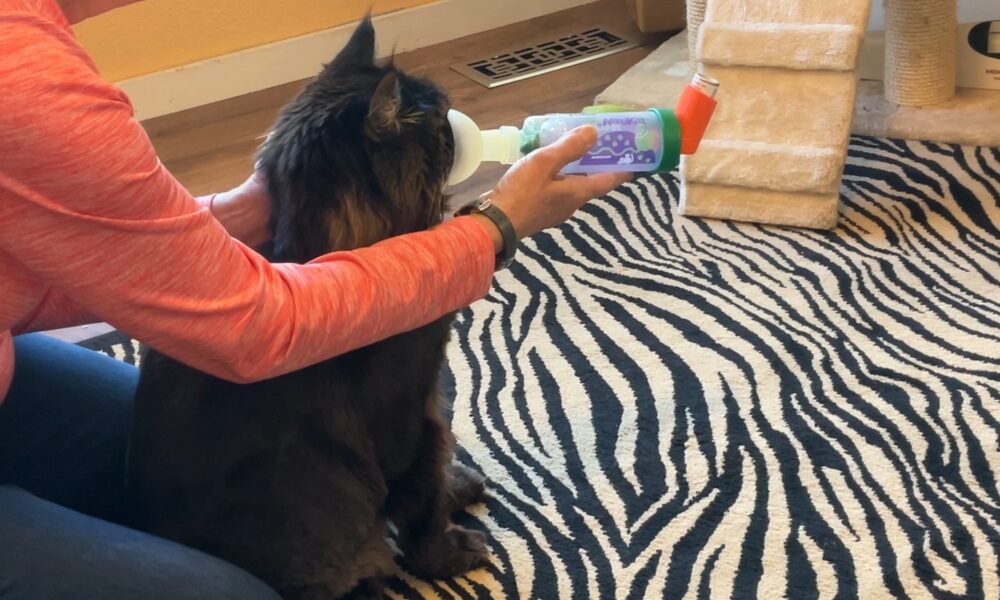
Does your cat cough? Are you waiting for a hairball to appear? If this is a frequent occurrence – say daily, a few times a week, even just once a month – it may be time to pay your veterinarian a visit.
A phlegmy, wet, productive cough often accompanies viral or bacterial infections. A hacking cough, where your cat crouches down during the coughing episode is typical of feline asthma.
the coughing cat with asthma
Feline asthma is an allergic response to something in the environment. Untreated, asthma can result in changes in the lungs that block air flow. The coughing cat with asthma who is not being treated can end up at the ER, breathing through her mouth (very un-catlike), panting and using her abdominal muscles to help push the air out (Reference 1).
Although the asthma cough is described as “coughing up” a hairball, remember that hairballs are hair that is ingested by the cat as she grooms. Hairballs are swallowed and end up in the stomach. The cat must vomit them up. This is a different motion than the pushing done by the abdominal muscles to clear the lungs of air during an asthma attack.
the vet visit
Be prepared to describe your cat’s cough:
- Is the cough wet or dry?
- How frequent is the cough?
- How long has your cat been coughing?
Other questions can include:
- Does your cat go outside?
- Do you deworm your cat?
- Has your cat lost weight?
diagnostics (Reference 2)
After taking a detailed history and performing an examination, your vet will recommend some diagnostics to help rule out other diseases that share similar clinical symptoms with asthma. These include heartworm disease, bronchitis, and viral, parasitic and bacterial infections.
- Blood work to assess major organ function
- Chest x-rays
- Fecal assays and heartworm testing
Occasionally, additional testing is needed.
- Bronchoscopy – a specialist will examine the cat’s airways with a small camera
- Samples of bacteria and cells in the airways can be collected during the bronchoscopy
treatment for feline asthma
If your vet is able to rule out viral, bacterial or parasitic infections, the next step is to initiate treatment for feline asthma. Treatment aims to help the coughing cat with asthma breathe better by reducing the inflammation and constriction in her airways. Untreated asthma can result in structural changes in the airways (Reference 1, 2).
The go-to therapy includes:
- oral corticosteroids such as prednisolone
- inhaled steroids that your cat can breathe in
- bronchodilators to decrease airway constriction. These can be given by injection (terbutaline) or by inhaler (albuterol).
Steroid therapy is lifelong for the coughing cat with asthma. Typically, your cat will start on oral steroids. If her cough responds to oral steroids, your vet will most likely recommend transitioning your cat to inhaled steroids, given by a metered dose inhaler.
benefits of inhaled steroids for cats with asthma
Although cats in general tolerate oral steroid therapy well, there are side effects to long-term administration:
- increased thirst and urination
- increased risk of infections
- weight gain
- muscle wasting
- diabetes
Taken by the oral route, medications are processed by the GI tract before entering the bloodstream and then going to the lungs. Inhaled steroids are delivered directly to your cat’s lungs; very little steroid enters the bloodstream, and side-effects are greatly reduced.
ADMINiSTRATION OF INHALANTS TO CATS
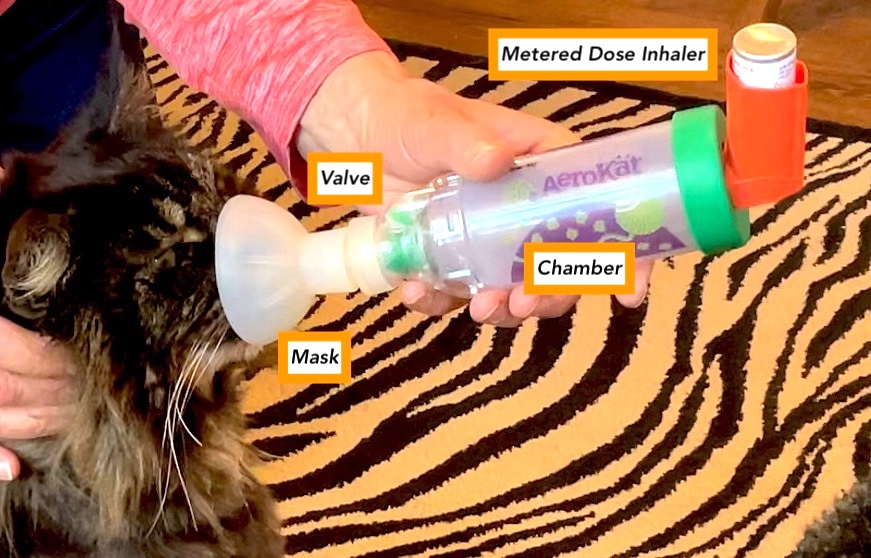 Unlike humans, who can place an inhaler between their lips, and breathe the medication in, the coughing cat with asthma, like young human children, must inhale the medication from a chamber.
Unlike humans, who can place an inhaler between their lips, and breathe the medication in, the coughing cat with asthma, like young human children, must inhale the medication from a chamber.
The chamber is a cylinder with a port for the metered dose inhaler on one end and a valve with a soft, silicone mask on the other. The inhaler is actuated, the medication sprays into the chamber, mixing with the air in the chamber. The cat can then breathe in the air/steroid mixture via the mask. A valve keeps the medication in the chamber until the cat takes a breath.
Per Trudell Animal Health (Aerokat), the medication is available in the chamber for 30 seconds. The cat must take 7-10 breaths to empty the chamber and get his medication.
training a cat to use an inhalant chamber
Training a cat to use one of these chambers is a multi-step process that may take a month or more. The oral steroid medication will overlap this training period. Visit “Teach Any Cat Aerokat” for a 5 step training program.
Environmental changes
Feline asthma is thought to be an allergic reaction to inhaled allergens. Treatment with steroids is the first step, but you can also keep your cat more comfortable by minimizing her exposure to irritants such as smoke, aerosols, and dust. Consider using HEPA air purifiers and humidifiers indoors (Reference 1, 2).
Feline asthma is a diagnosis of exclusion. Once viral, parasitic or bacterial infections are found to be unlikely, treatment with corticosteroids and bronchodilators can begin. These are lifelong treatments but the prognosis for a treated feline asthmatic is good.
references
- Garrity S, Lee-Fowler T, Reinero C. Feline asthma and heartworm disease: Clinical features, diagnostics and therapeutics. Journal of Feline Medicine and Surgery. 2019;21(9):825-834. doi:10.1177/1098612X18823348
- Deininger K., “Understanding Feline Asthma”. Veterinary Health Center, University of Missouri. Uploaded 10/2016. https://vhc.missouri.edu/wp-content/uploads/2016/10/feline_asthma.pdf, viewed 11/2024.

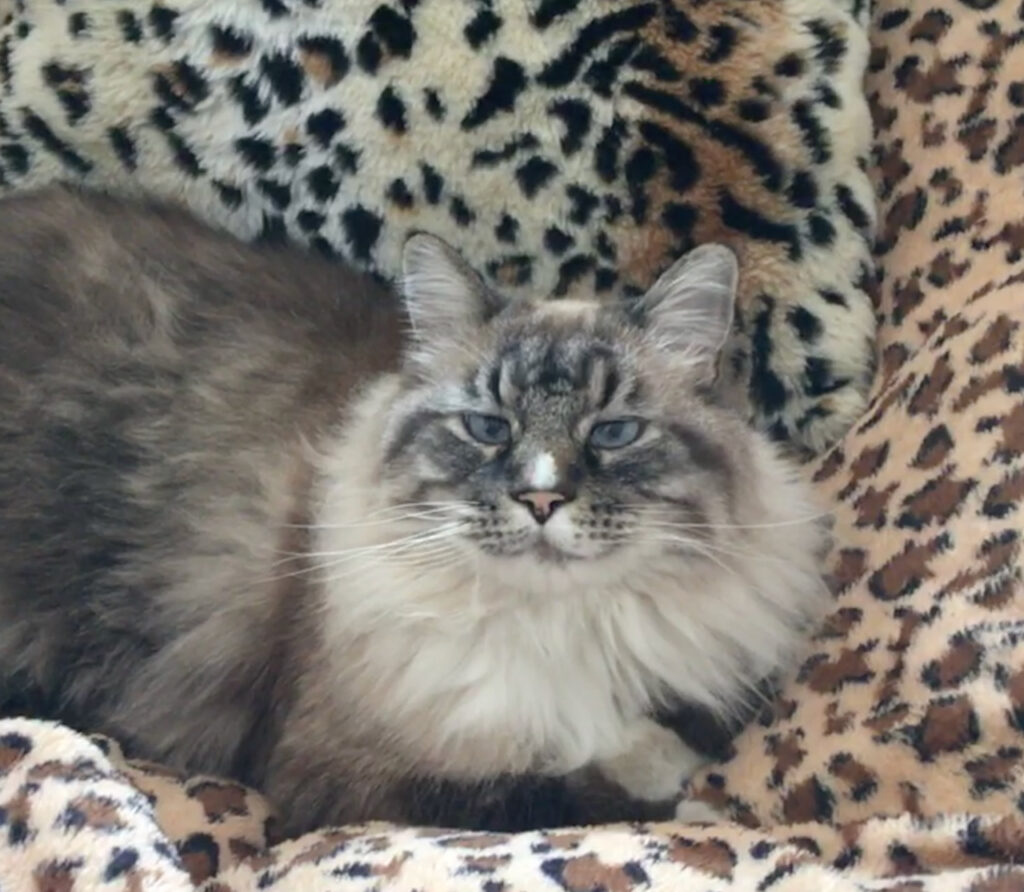

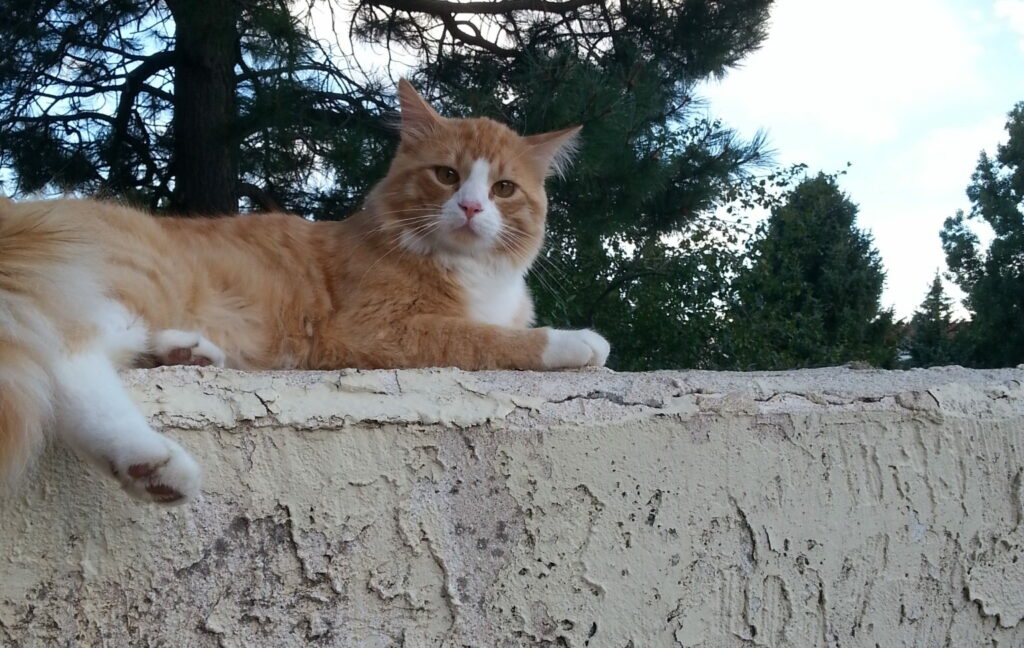 There has been a stray cat hanging around the house. He is friendly and after a few weeks of feeding him and scratching his head, you decide to adopt him. You do the responsible thing and take him to your vet for an exam, vaccines, and FeLV/FIV test.
There has been a stray cat hanging around the house. He is friendly and after a few weeks of feeding him and scratching his head, you decide to adopt him. You do the responsible thing and take him to your vet for an exam, vaccines, and FeLV/FIV test.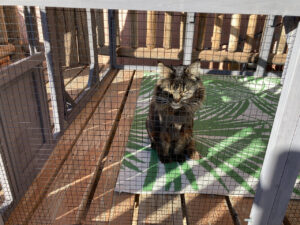
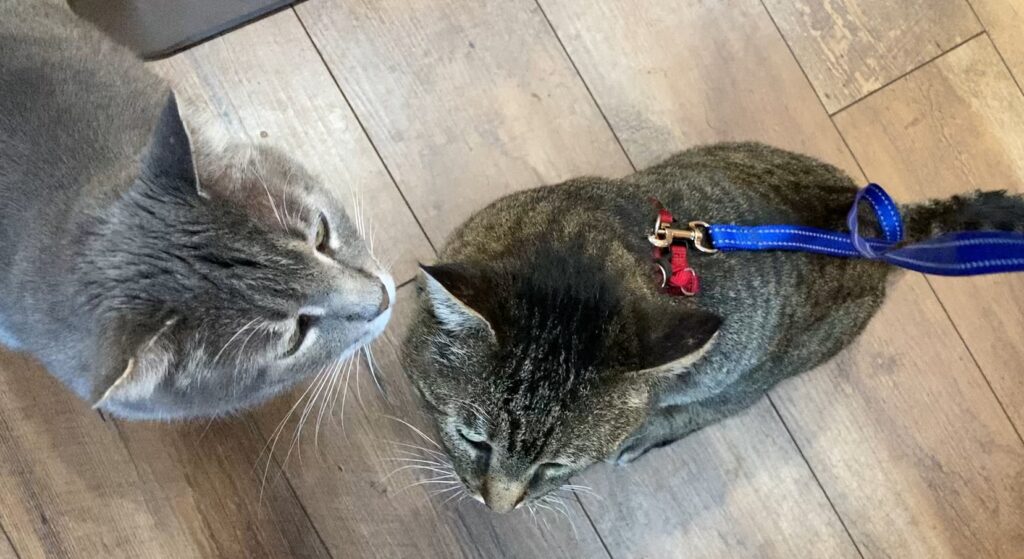
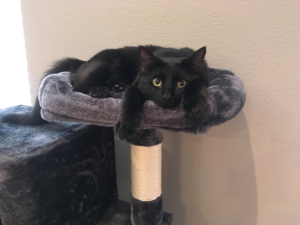
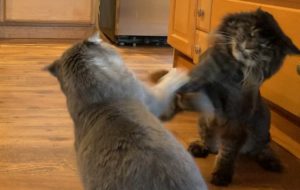
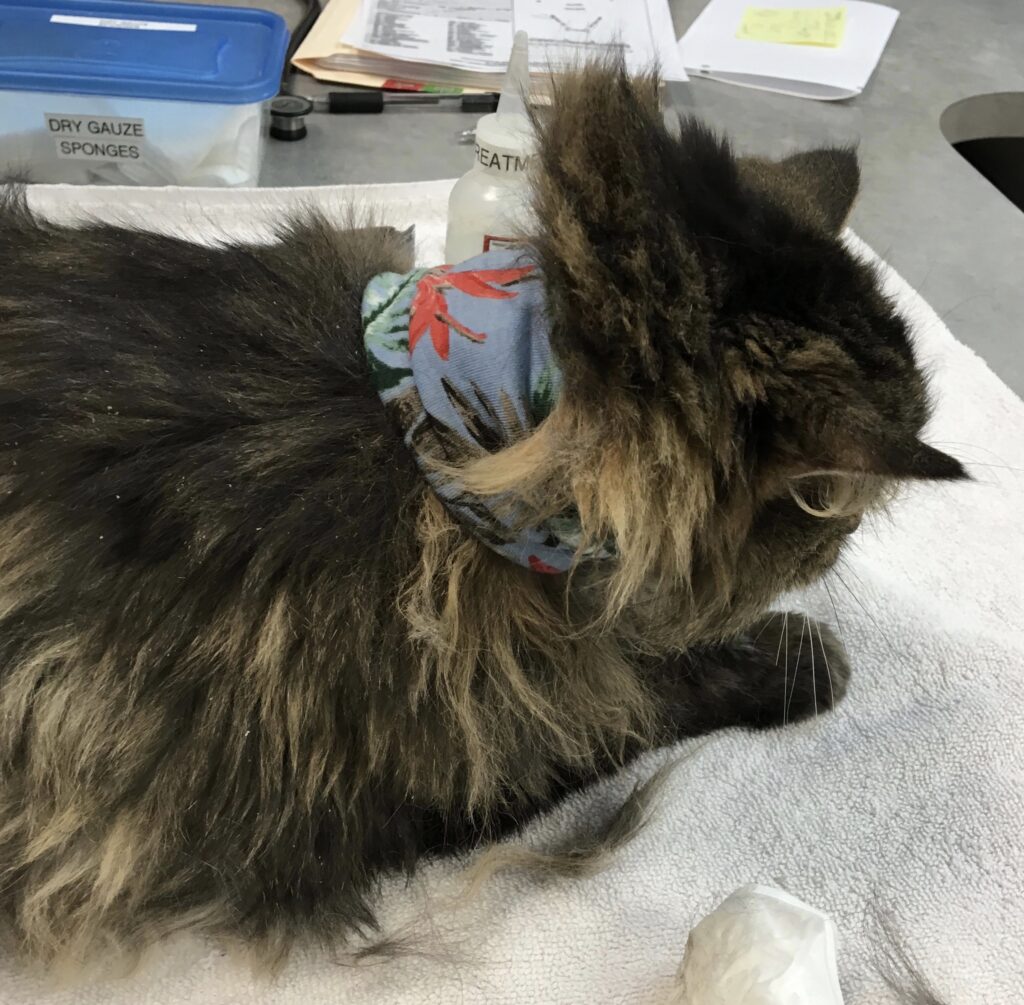
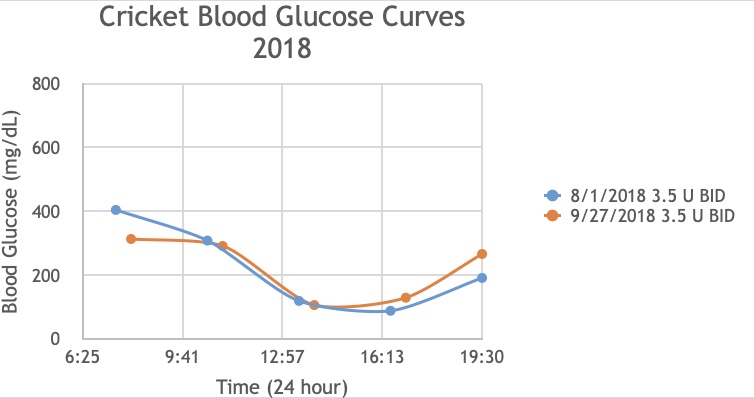
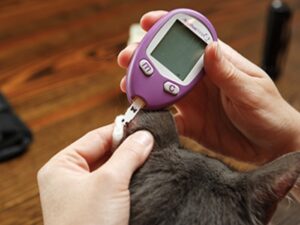
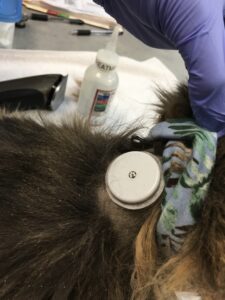

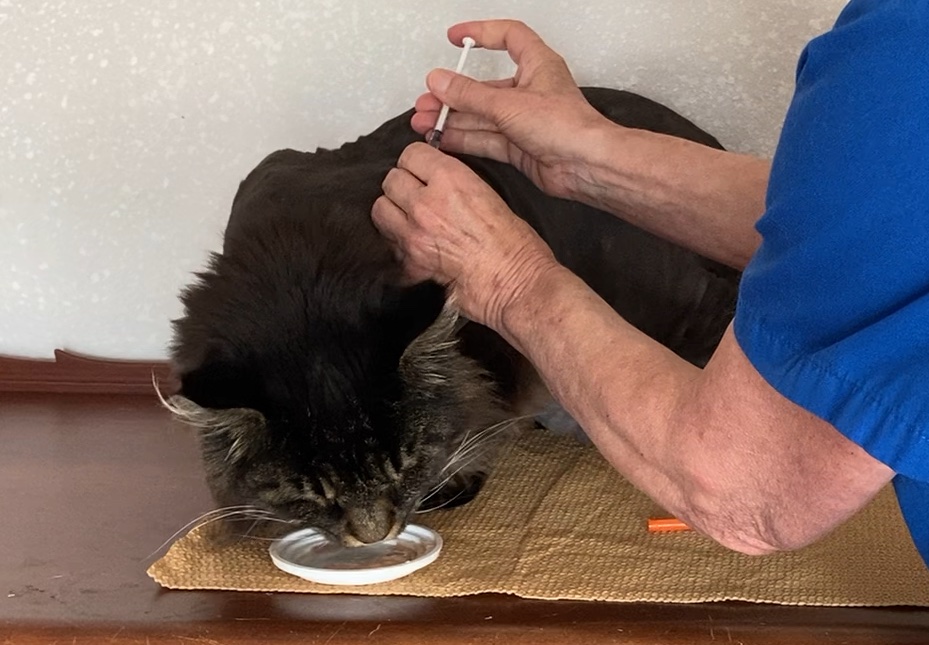
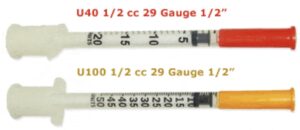
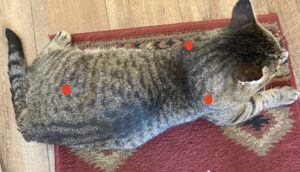
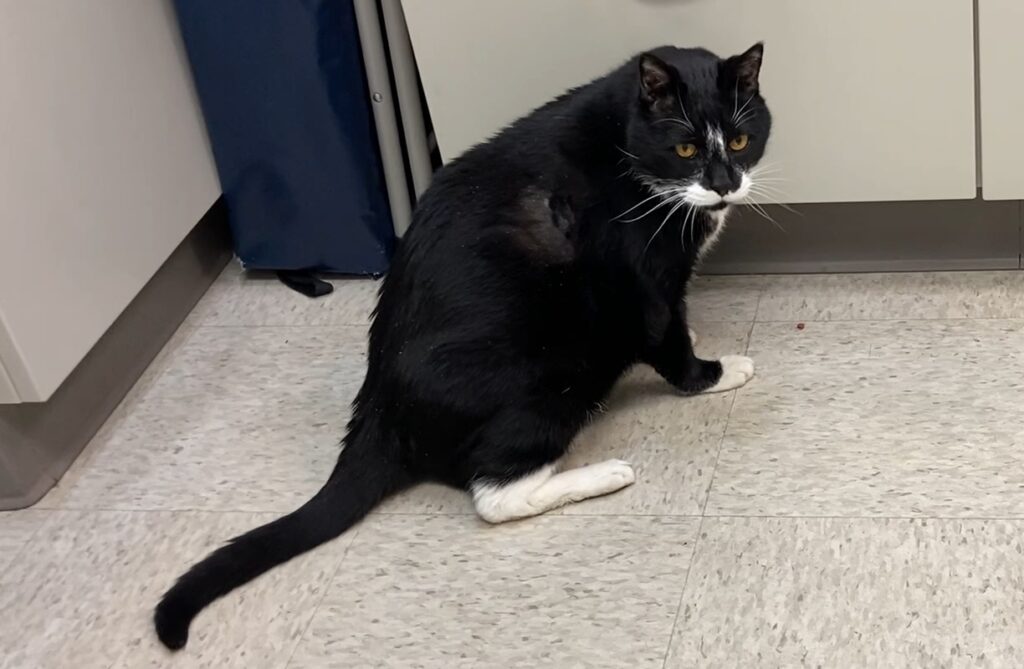
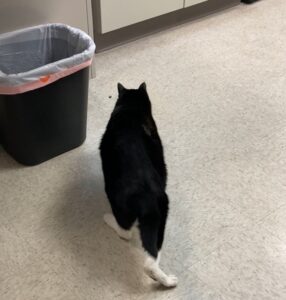 references
references